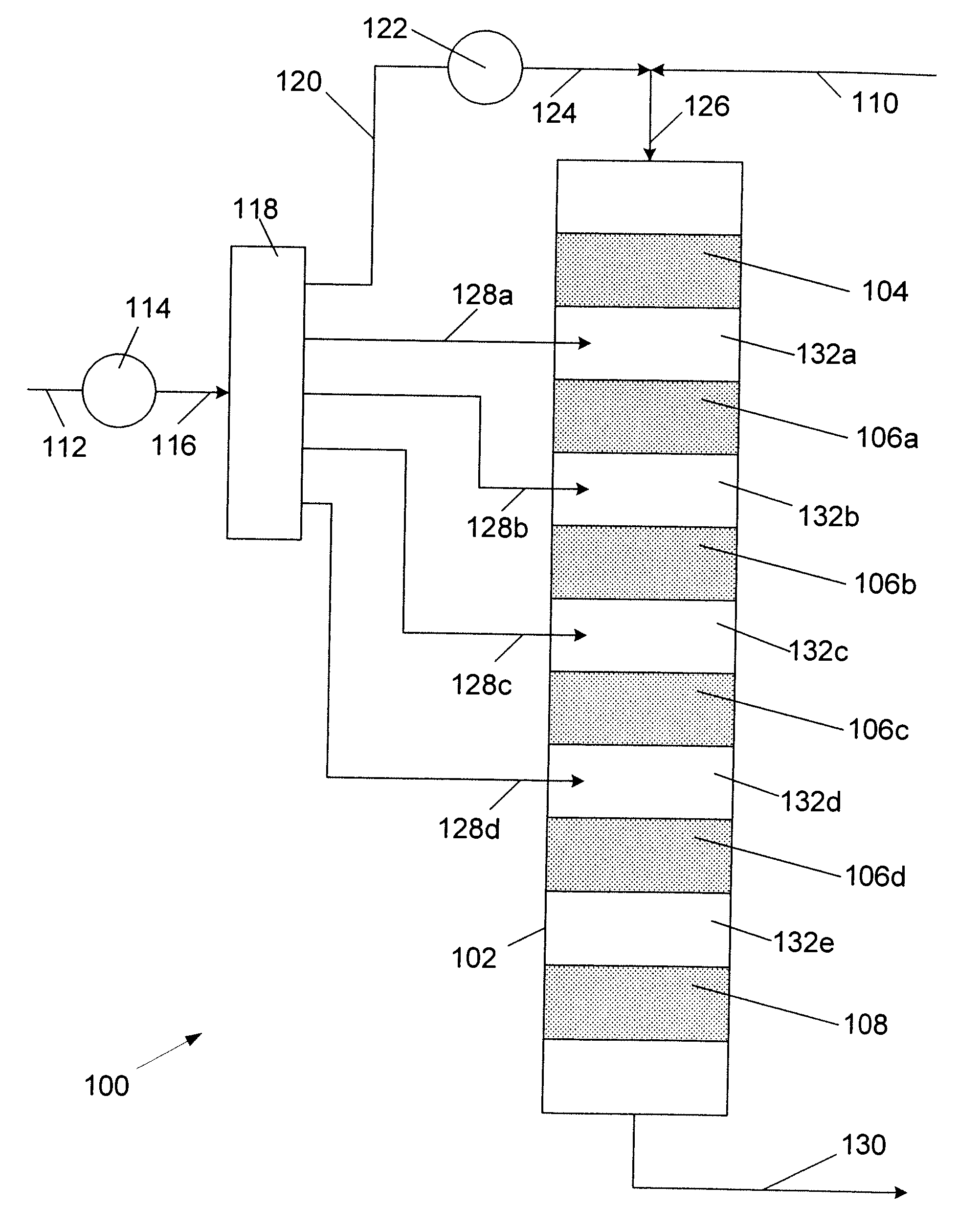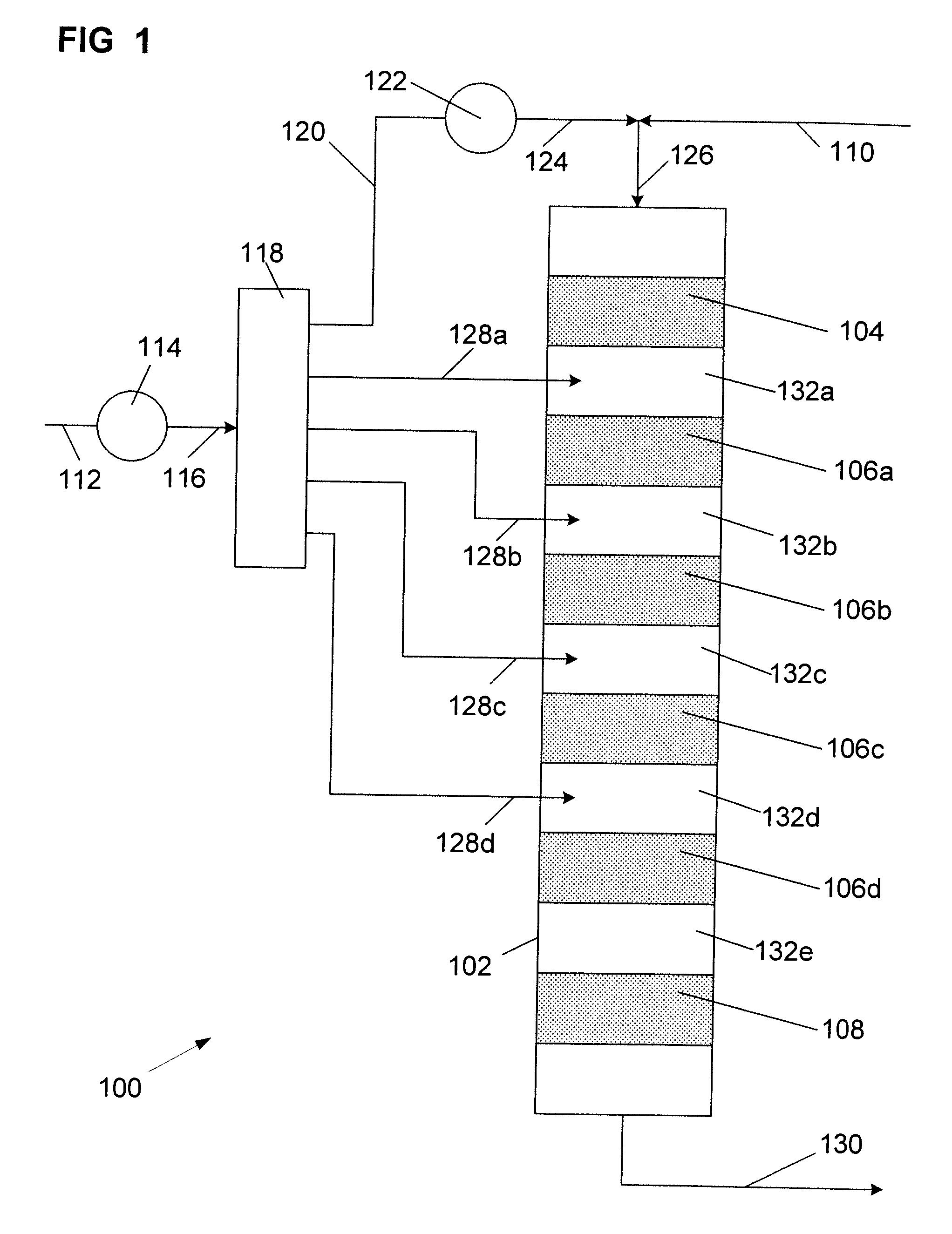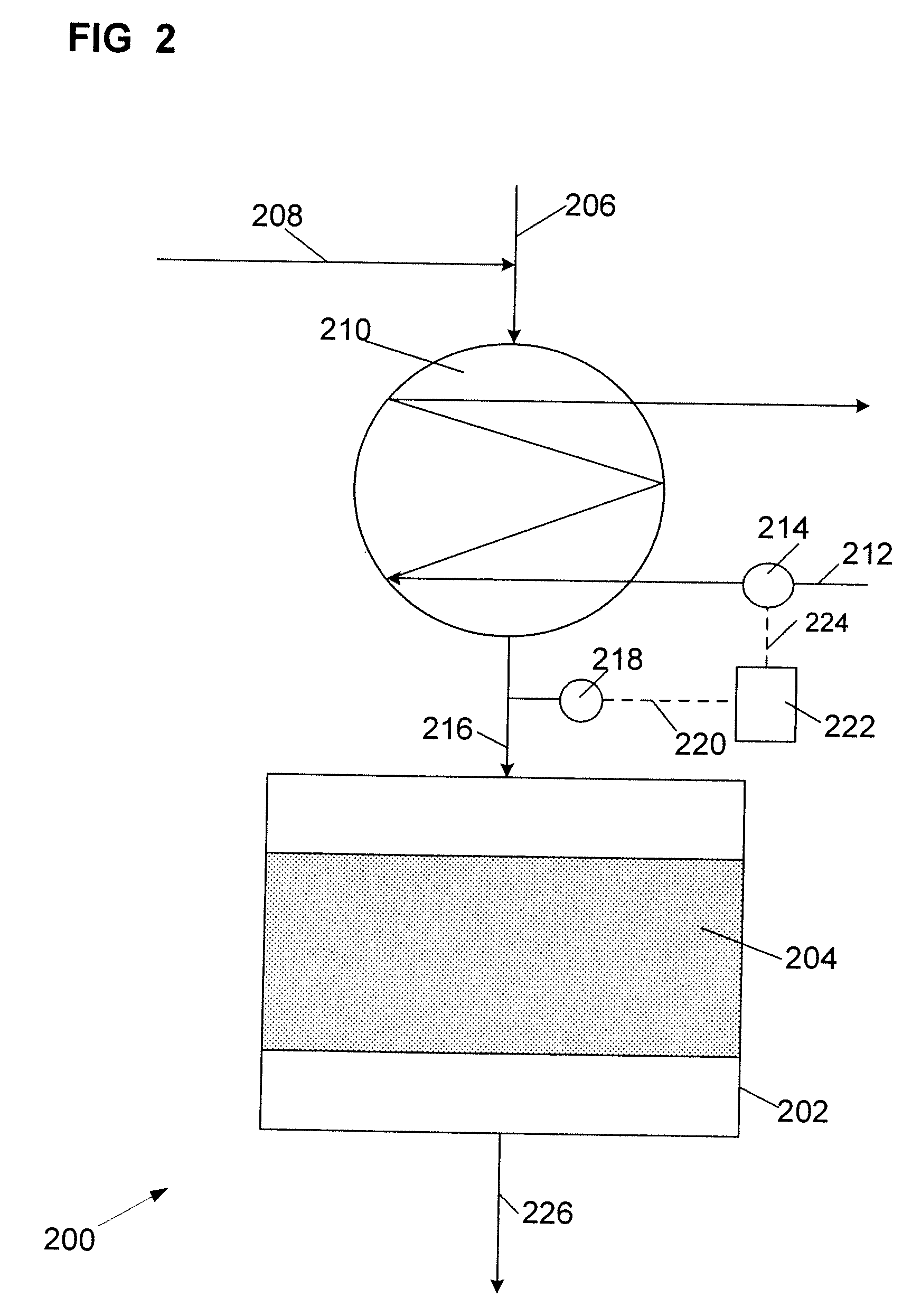Process and Apparatus for Alkylation of Aromatic Compound with Aliphatic Mono-Olefin Compound of 8 to 18 Carbon Atoms
- Summary
- Abstract
- Description
- Claims
- Application Information
AI Technical Summary
Benefits of technology
Problems solved by technology
Method used
Image
Examples
Embodiment Construction
The Feed and Products:
[0029]The aliphatic feedstock used in the processes of this invention contains aliphatic mono-olefin of 8 to 18, preferably 8 to 16, more preferably 8 to 14, carbon atoms per molecule. The aliphatic olefin is usually a mixture of olefins having different molecular weights. The olefin may be an alpha-olefin or comprise a mixture of olefin isomers. In most instances, the positioning of the olefinic bond in the molecule is not critical as most solid alkylation catalysts have been found to promote migration of the olefinic bond.
[0030]The branching of the hydrocarbon backbone is often a concern as the structural configuration of the alkyl group on the alkylaromatic product can affect performance. For instance, where alkylbenzenes are sulfonated to produce surfactants, undue branching can adversely affect the biodegradability of the surfactant. On the other hand, some branching may be desired such as the lightly branched modified alkylbenzenes such as described in U....
PUM
| Property | Measurement | Unit |
|---|---|---|
| Temperature | aaaaa | aaaaa |
| Temperature | aaaaa | aaaaa |
| Temperature | aaaaa | aaaaa |
Abstract
Description
Claims
Application Information
 Login to View More
Login to View More - R&D
- Intellectual Property
- Life Sciences
- Materials
- Tech Scout
- Unparalleled Data Quality
- Higher Quality Content
- 60% Fewer Hallucinations
Browse by: Latest US Patents, China's latest patents, Technical Efficacy Thesaurus, Application Domain, Technology Topic, Popular Technical Reports.
© 2025 PatSnap. All rights reserved.Legal|Privacy policy|Modern Slavery Act Transparency Statement|Sitemap|About US| Contact US: help@patsnap.com



